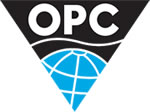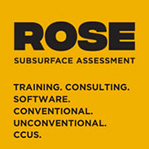Middle East / Africa
Country profile: Libya
| Location: | Northern Africa, bordering the Mediterranean Sea, between Egypt and Tunisia |
| Climate: | Mediterranean along coast; dry, extreme desert interior |
| Terrain: | mostly barren, flat to undulating plains, plateaus, depressions |
| Size: | 1759540 sq. km total (Land area: 1759540 sq. km ) |
| Population: | 6,173,579 |
| Languages: | Arabic, Italian, English, all are widely understood in the major cities |
| Government: | Jamahiriya (a state of the masses) in theory, governed by the populace through local councils; in practice, an authoritarian state |
| Capital city: | Tripoli |
| Legal system: | based on Italian and French civil law systems and Islamic law; separate religious courts; no constitutional provision for judicial review of legislative acts; has not accepted compulsory ICJ jurisdiction |
| Currency: | Libyan dinar (LYD) |
| Licensing: |
Country profile
Libya relies on oil and natural gas to satisfy energy consumption demand. Economic growth in Libya is dependent on the hydrocarbon industry. According to the World Bank, the country’s hydrocarbon exports account for over 95 percent of total merchandize exports and revenues from the oil and natural gas sectors amount to over half of the country’s gross domestic product (GDP).
Since the United Nations and the United States lifted sanctions over Libya in 2003 and 2004, respectively, oil majors have stepped up exploration efforts for oil and natural gas in the country. Likewise, companies have tried using enhanced oil recovery (EOR) techniques to increase production at maturing fields. Over the next six years, Libya would like to see oil production capacity increase by 40 percent from 1.8 million barrels per day (bbl/d) to 3 million bbl/d by 2013.
The Italians supplanted the Ottoman Turks in the area around Tripoli in 1911 and did not relinquish their hold until 1943 when defeated in World War II. Libya then passed to UN administration and achieved independence in 1951. Following a 1969 military coup, Col. Muammar Abu Minyar al-QADHAFI began to espouse his own political system, the Third Universal Theory. The system is a combination of socialism and Islam derived in part from tribal practices and is supposed to be implemented by the Libyan people themselves in a unique form of "direct democracy."
QADHAFI has always seen himself as a revolutionary and visionary leader. He used oil funds during the 1970s and 1980s to promote his ideology outside Libya, supporting subversives and terrorists abroad to hasten the end of Marxism and capitalism. In addition, beginning in 1973, he engaged in military operations in northern Chad's Aozou Strip - to gain access to minerals and to use as a base of influence in Chadian politics - but was forced to retreat in 1987.
UN sanctions in 1992 isolated QADHAFI politically following the downing of Pan AM Flight 103 over Lockerbie, Scotland. During the 1990s, QADHAFI began to rebuild his relationships with Europe. UN sanctions were suspended in April 1999 and finally lifted in September 2003 after Libya accepted responsibility for the Lockerbie bombing. In December 2003, Libya announced that it had agreed to reveal and end its programs to develop weapons of mass destruction and to renounce terrorism. QADHAFI has made significant strides in normalizing relations with Western nations since then. He has received various Western European leaders as well as many working-level and commercial delegations, and made his first trip to Western Europe in 15 years when he travelled to Brussels in April 2004. Libya has responded in good faith to legal cases brought against it in US courts for terrorist acts that predate its renunciation of violence. Claims for compensation in the Lockerbie bombing, LaBelle disco bombing, and UTA 772 bombing cases are ongoing. The US rescinded Libya's designation as a state sponsor of terrorism in June 2006. In late 2007, Libya was elected by the General Assembly to a nonpermanent seat on the United Nations Security Council for the 2008-09 term..
Energy production and consumption
| Oil | Gas | |
| Production: | 1 million bbl/day (2006 est.) | 10 billion cu m (2005 est.) |
| Consumption: | 266,000 bbl/day (2006 est.) | 5 billion cu m (2005 est.) |
| Exports: | 1 million bbl/day (2006 est.) | 5 billion cu m (2005 est.) |
| Imports: | 1,233 million bbl/day (2006 est.) | |
| Reserves: | 45 billion bbl (2007 est.) | 1 trillion cu m (1 January 2006 est.) |
| Major fields: |
Libya - recent news
| 04 Nov 25 |
Libya: National Oil Corporation announces a new oil discovery in the Sirte Basin. Libya's National Oil Corporation has announced a new oil discovery by OMV in the Sirte Basin, at well B1 in Block 106/4. THe well produced over 4,200 barrels of oil per day, with gas production expected to exceed 2.6 million cubic feet daily. |
| 04 Nov 25 |
Libya: Chairman of the National Oil Corporation holds meeting with Eni CEO During ADIPEC 2025 As part of the National Oil Corporation’s (NOC) participation in the Abu Dhabi International Oil and Gas Exhibition and Conference (ADIPEC 2025), Eng. Masoud Suleman Musa, Chairman of the Board of Directors of the NOC, met with Mr. Claudio Descalzi, CEO of the Italian energy company Eni. |
| 07 Oct 25 |
Libya: Eni North Africa restarts exploratory drilling in the offshore area northwest of Libya in Contract Area D (MN 41) Eni North Africa, the Italian energy company, has resumed its exploration activities in the offshore area northwest of Libya, specifically in Block 16/4, after a hiatus of more than five years. This comeback includes re-entering the exploratory well C1-16/4 (also known as BESS-3), where drilling operations were previously halted in 2020 due to the COVID-19 pandemic. |
| 24 Aug 25 |
Libya’s NOC to stage first U.S.-Libya Energy Forum The National Oil Corporation (NOC), in collaboration with the American company 'Freedom First', is set to organize the inaugural U.S.-Libya Energy Forum soon. The forum aims to strengthen bilateral relations between Libya and the United States, expand partnerships and investments in the oil and gas sector, and pave the way for a sustainable energy future. |
| 06 Aug 25 |
Libya: ExxonMobil signs MoU to explore four blocks offshore Libya Libya's National Oil Corporation has signed an MoU with ExxonMobil in London. The broad outlines of the MoU state that ExxonMobil conducts a detailed technical study of four offshore blocks located near the northwest coast and the Sirte Basin. |
Libya - more news
Other countries in this region
- Algeria,
- Angola,
- Bahrain,
- Benin,
- Botswana,
- Burundi,
- Cameroon,
- Central Africa Republic,
- Chad,
- Comoros,
- Congo (Brazzaville),
- Congo (Democratic Rep.),
- Cote d'Ivoire,
- Djibouti,
- Egypt,
- Equatorial Guinea,
- Eritrea,
- Ethiopia,
- Gabon,
- Gambia,
- Ghana,
- Guinea (Republic),
- Guinea Bissau,
- Iran,
- Iraq,
- Israel,
- Jordan,
- Kenya,
- Kuwait,
- Lebanon,
- Liberia,
- Madagascar,
- Malawi,
- Mali,
- Mauritania,
- Mauritius,
- Morocco,
- Mozambique,
- Namibia,
- Niger,
- Nigeria,
- Oman,
- Palestine,
- Qatar,
- Rwanda,
- Sao Tome,
- Saudi Arabia,
- Senegal,
- Seychelles,
- Sierra Leone,
- Somalia,
- Somaliland,
- South Africa,
- South Sudan,
- Sudan,
- Syria,
- Tanzania,
- Togo,
- Tunisia,
- Uganda,
- United Arab Emirates,
- Western Sahara,
- Yemen,
- Zambia,
- Zanzibar,
- Zimbabwe












